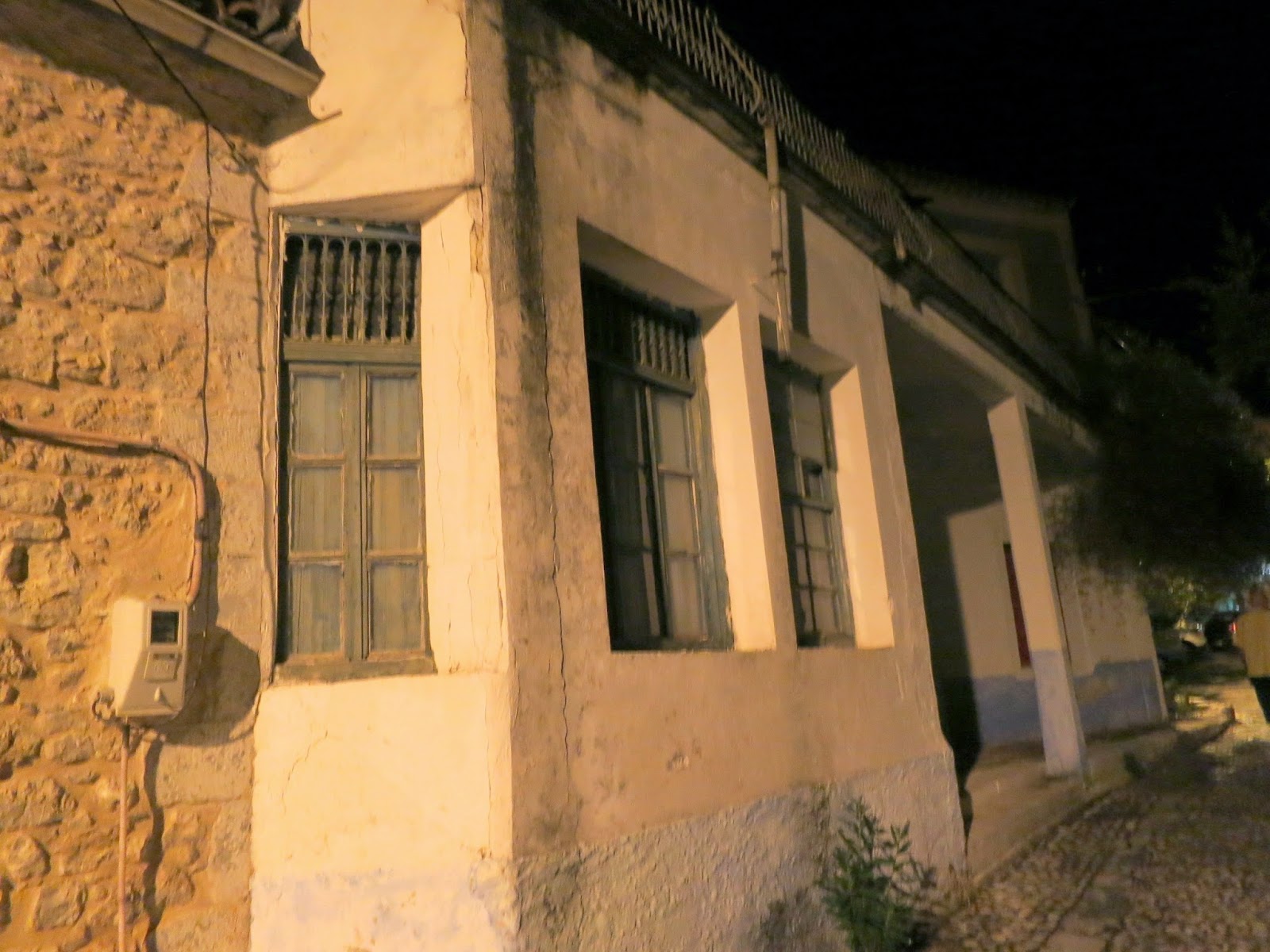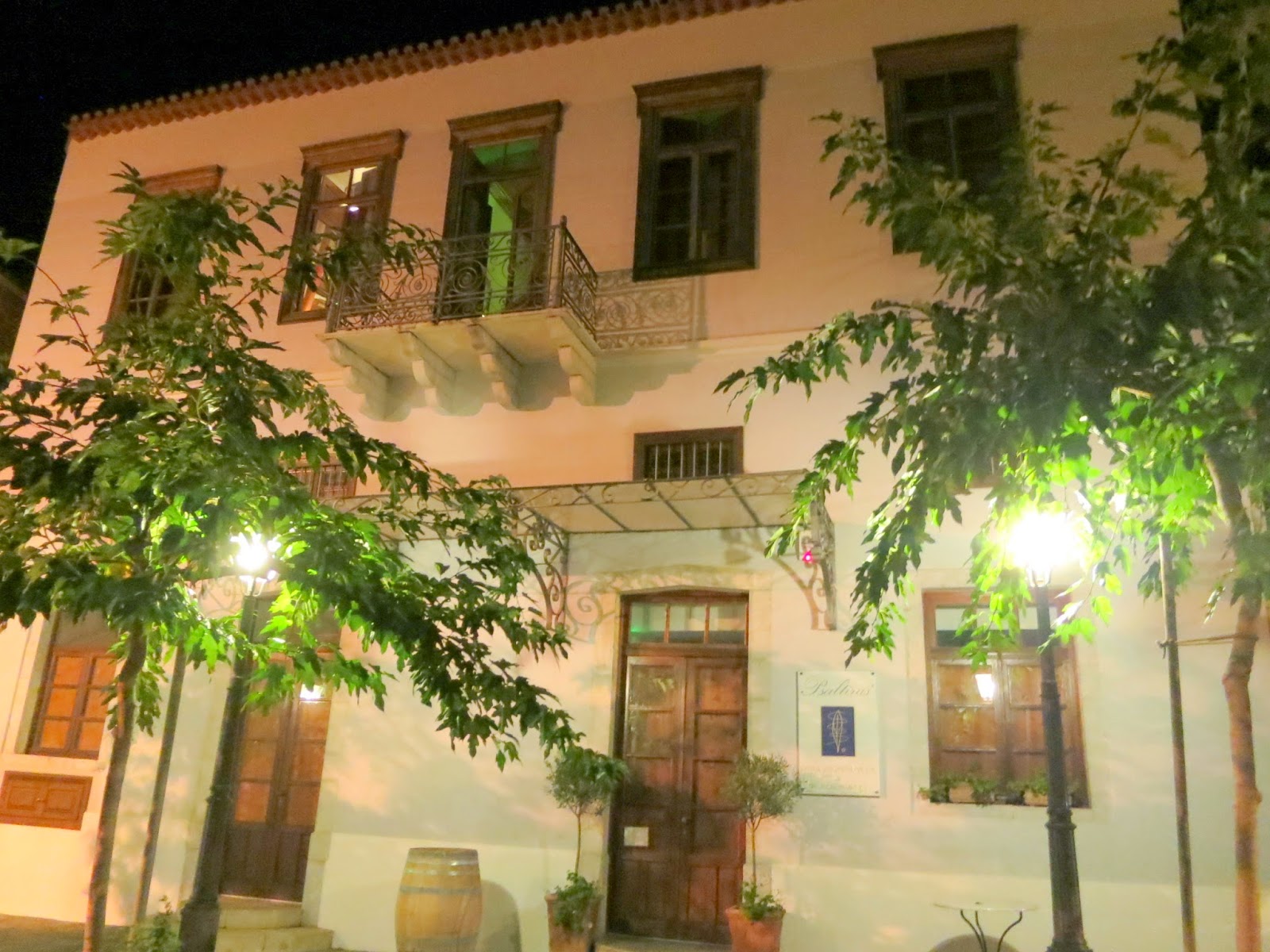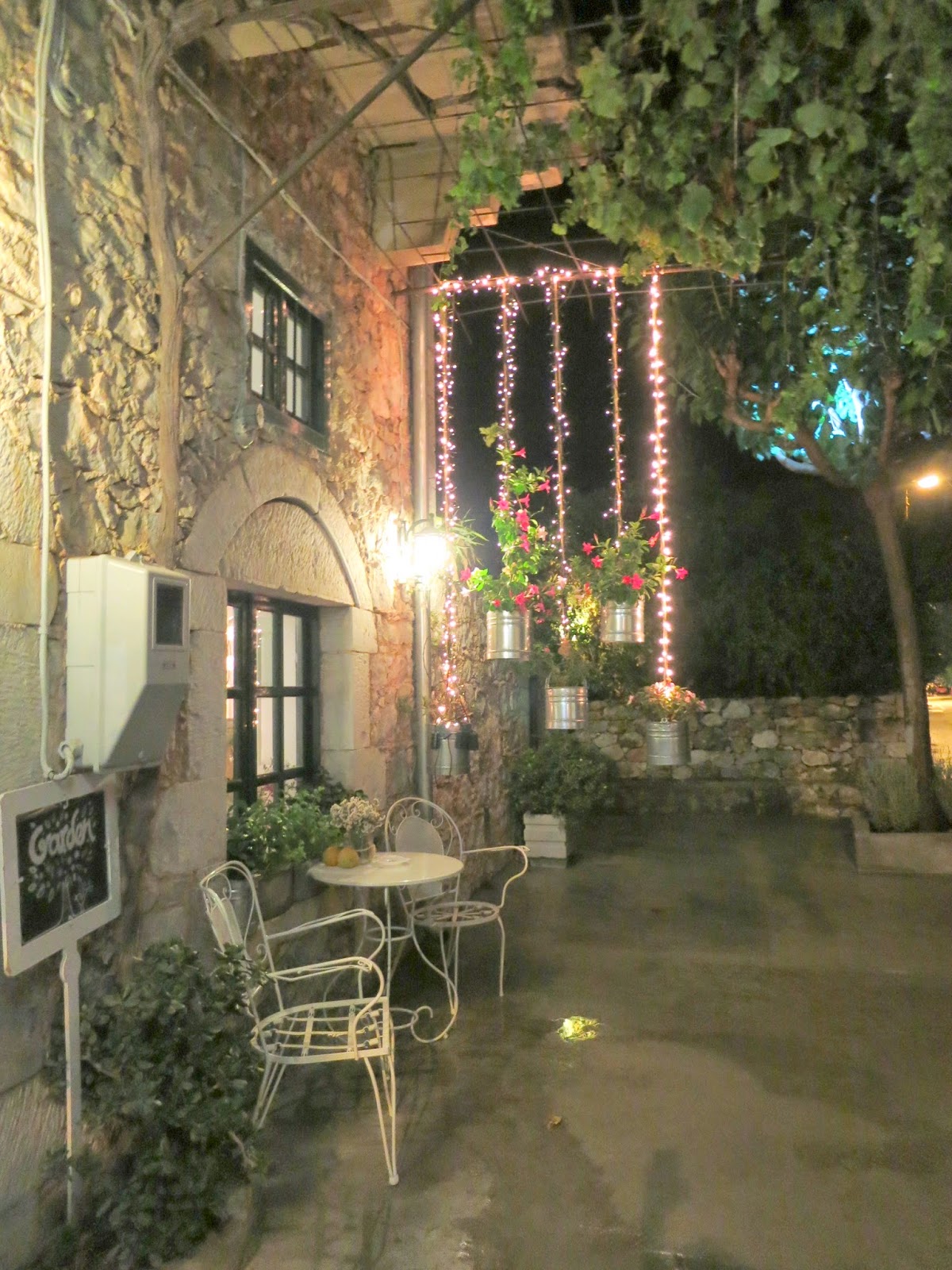Night had fallen by the time we arrived in Kardamyli. We managed to get out of the car before the heavens opened - and what a storm it was! We took shelter in a café across the road from this shop and waited for the rain to stop. The waiter would go up to the canopy every few minutes, prod it with a broom handle and all the accumulated water would whoosh down - a waterfall.
The streets were deserted by the time the rain stopped and we started wandering around.
The main village square.
Patrick Leigh Fermor who had made Kardamyli his home described his first impressions of the village: 'It was unlike any village I had seen in Greece. These houses, resembling small castles built of golden stone with medieval-looking pepper-pot turrets, were topped by a fine church. The mountains rushed down almost to the water's edge with, here and there among the whitewashed fishermen's houses near the sea, great rustling groves of calamus reed ten feet high and all swaying together in the slightest whisper of wind. There was sand underfoot and nets were looped from tree to tree... I felt like staying there forever'.
It was a delight walking along the main village street
so many gorgeous building to look at
Had not all the tavernas and bars been full of people we would have thought that we were the only living souls in the whole village
We found some very cute little shops and this was one of them
interesting interior
bric-a-brac, antiques, paintings
I liked this rusty iron coquerel, but it was not for sale
I also liked the ceramic fish
pavement
Another find was this shop that sold everything to do with olives
so we had to go in and browse
lots of things on display for sampling - the olives were delicious particularly since Kalamata olives are my favourites
wonderful old door
glass paned window and shutters - everything just so
Back out walking along the main road
I love these old balconies
it must be so cool and airy sitting up there
detail
a grand stone house
a closer look at that turreted balcony
every house is different but in the same style
a closer look at the stone balcony supports
A bar that was buzzing with people
looking in
and again.

This restaurant is right by the sea
looking closer - no one sitting outside, the storm had seen to that
a bar
and another
perfectly proportioned
small but cute
I liked the shutters of this one
perfect symmetry - almost
a closer look at the wrought iron balcony
Talking about Art, (a loose translation), so we had to go in
a lovely bookshop and their selection of books was very discerning - I was impressed
driftwood and bits
lots of lovely little shops
with great attention to detail.

It was time to eat and we chose Lela's which had been recommended by the people in the bookshop
A lovely, intimate little terrace
and the food was the best any of us had had for a long time, every single dish was a culinary delight - the draft wine was exceptional too
everything was delicious.
The sea was a stone's throw away from the terrace so I went to have a look
and when I went inside I found someone having a well-deserved rest.
As we were leaving Lela's we spotted this amphorae originally used for oil or wine, now serving as a plant container.
A final quote from Patrick Leigh Fermor: 'Whiwashed ribbed amphorae for oil or wine, almost the size of those dug up in the Palace of Minos, stood by many a doorway. Once more I wondered how these immense vessels were made. They are obviously too big for any potter smaller than a titan with arms two yards long. As usual, theories abound. Some say a man gets inside the incipient jar like a robber in the Arabian Nights, and builds up the expanding and tapering walls as they rotate on a great wheel; some that the halves are constructed separately and then put together; others that they are cast in huge moulds; yet others assert that they are built up from a rope of clay that is paid out in an expanding and then contracting coil until the final circle of the rim is complete' which is made to account for the ribs and the fluting that gird them from top to bottom... I had heard, all over Greece, that they came from Coroni in the Messinian peninsula, only the other side of the gulf. It was strange that, even here, there should be such a conflict of solutions. There were only four men in the little group I asked among the beached fishing boats. If there had been more, no doubt the total of solutions would have risen accordingly'.
Of all the places we visited last week, it's Kardamyli that has been haunting me ever since. I think about it in the most unexpected moments. It's a place that I will have to revisit, preferably during the day next time.
Finally, an aerial photograph of a small part of the village that I found in a book of aerial photographs of Greece, published by TA NEA.

















































Interesting architecture. What led to the prosperity which created these buildings? Was it all olives? I have not read Patrick Leigh Fermor, but such is his popularity I imagine that the village is supported by tourism now.
ReplyDeleteI have not read Patrick Leigh Fermor either, except for bits that I was able to find on the web following our visit, but will add his book on Mani on my long list of books to read. I was bewitched by the village (and still am) to such an extent that I did not even consider the questions you pose, Olga. I must go back. We tried to stay there, but everything was fully booked, so that might be the answer to your second question. This is my second visit to Mani and both times I have wanted to go back, stay, and explore.
DeleteWhat a treat to read Leigh Fermor for the first time, joys in store. xx
ReplyDeleteThat's what I thought, Avril.
Deleteolga norris, I recognize the name. do read leigh-fermor; I have enjoyed being buried in his work. the photos are spectacular. have you been there? what is the state of the village, now? any real time information will be appreciated. thelma scudi
ReplyDeleteKardamili is still as lovely as it ever was.
DeleteAs you probably know, the woman taking the well-earned break is Lela herself, PLF's former housekeeper. Passed away in 2015 sadly.
ReplyDeleteI did not know that. Very interesting. Thank you Paul.
ReplyDelete